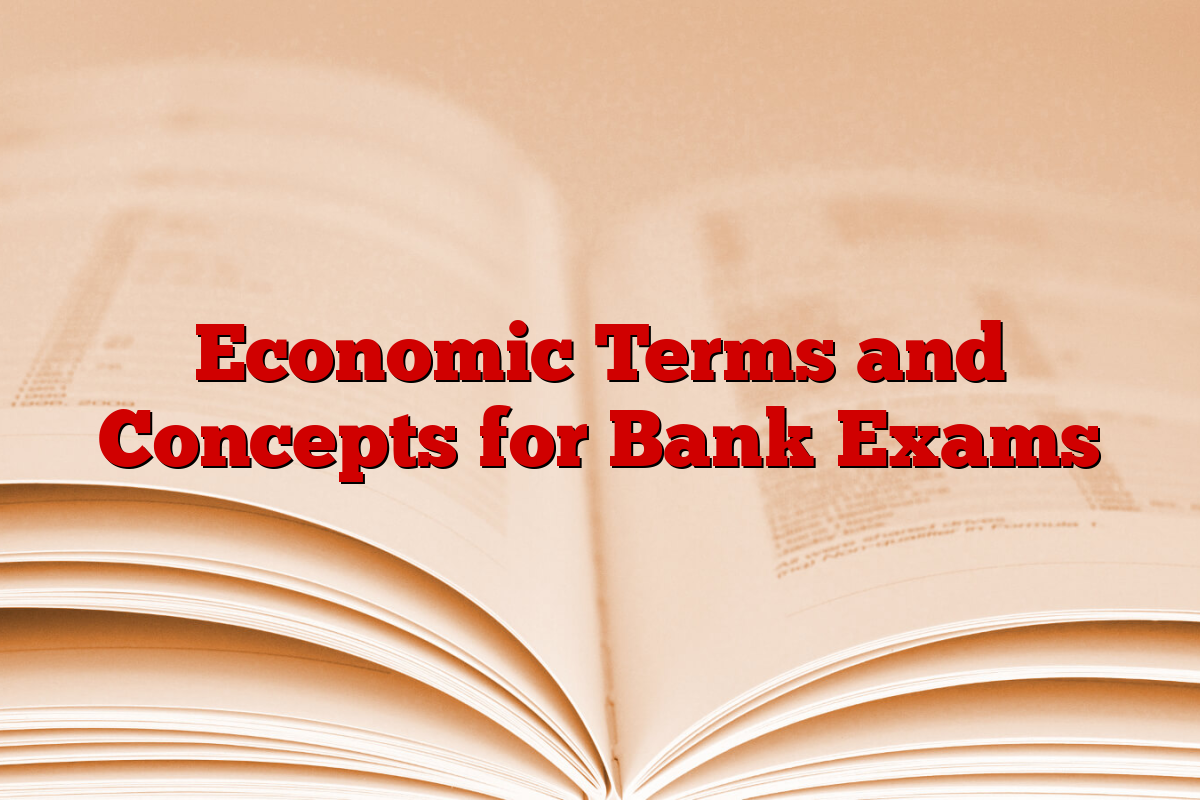It is very important to understand economic conditions and concepts for bank examinations, especially in the main and interview stages. These topics often appear in general awareness or banking awareness sections and help in answering questions related to finance, banking and Indian economy. In this article, we will explain the major economic words that are usually seen in bank examinations to help strengthen your preparation.
Economic terms and concepts for bank exam
Many of these economic terms are associated with topics such as inflation, GDP, monetary policy, fiscal policy, demand and role and role of institutions such as RBI and IMF. Questions in bank exams often test your understanding of how these conditions apply in the banking and financial conditions of the real world. Knowing these concepts not only helps to score well in the main examination, but also promotes your confidence during the interview, where current economic issues are often discussed.
1. GDP (GDP):
It is the total value of all goods and services produced within a country in a specific period. This reflects the overall economic health of a nation.
2. Inflation:
This refers to an increase in the general price level of goods and services over time. High inflation reduces money purchasing power.
3. Deflation:
Reduction in normal value levels of goods and services. This usually indicates weak demand in the economy.
4. Fiscal Policy:
Use of government spending and taxation to affect the economy. It is managed by the Ministry of Finance.
5. monetary policy:
The process by which the central bank (RBI in India) controls the supply and interest rates of funds to maintain price stability and development.
6. Repo Rate:
The rate at which the RBI pays money to commercial banks. It is used to control inflation and liquidity.
7. Reverse repo rate:
The rate at which the RBI borrows money from commercial banks. It helps in management of money supply in the economy.
8. CRR (cash reserve ratio):
The percentage of total deposits that banks should keep as stores with RBI. It helps in controlling liquidity.
9. SLR (legal liquidity ratio):
The percentage of total deposits that banks should keep as liquid assets like gold or government securities.
10. demand and supply:
Demand is the will of consumers to buy goods at a given price. Supply is the amount of items available for sale. Prices are affected by balance between the two.
11. Budget deficit:
This occurs when government expenditure exceeds its revenue. A high budget deficit can affect economic stability.
12. Payment balance (BOP):
It is a record of all economic transactions between residents of a country and the rest of the world in a specific period.
13. Foreign Direct Investment (FDI):
Investment by a foreign unit in business or production in another country. It helps in improving capital flow and employment.
14. NPA (non-performing asset):
A loan or advance for which the principal or interest payment is overdue for 90 days or more. High NPAs are a concern for banks.
15. base rate:
The minimum rate set by RBI under which banks are not allowed to lend to customers. This ensures transparency in borrowings.

